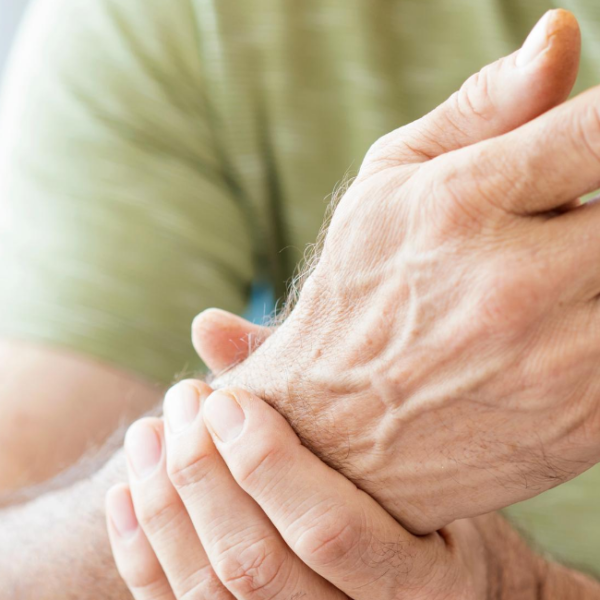Stiff, swollen and painful joints are common symptoms of arthritis. You might notice that in any joint in your body, such as your fingers, wrists, elbows, hips, knees or ankles.
There’s no cure for arthritis so treatment focuses on relieving pain and maintaining your joint function and movement. Exercise can really help your arthritis. A skilled Physiotherapist or Exercise Physiologist can help you exercise safely to improve your arthritis. That may include a mix of strength training, flexibility exercises, aerobic exercise, and hydrotherapy.
It’s thought that 4 million Australians live with arthritis (that’s 1 in 6 of us). It’s the leading cause of chronic pain and the second most common cause of disability and early retirement due to ill health in Australia.
It’s not just an old person’s disease either. Around half of those living with arthritis are of working age (15-64 years). Children can also get arthritis.
We’re still learning about the best ways to treat arthritis but we do know that it’s important to keep moving your joints. It really is a case of ‘use it or lose it’.
What Is Arthritis?
Arthritis is a common condition that affects your joints, those areas of your body where two or more bones meet. Arthritis can affect the bone, muscle, and soft tissues surrounding your joints. If you have arthritis, you may experience joint pain, stiffness, and reduced function. That can cause disability and reduce your quality of life.
There are over 100 different types of arthritis. Most forms of arthritis are caused by the body’s immune system attacking its own joint tissues.
Common types include:
- Osteoarthritis (the most common type), involves changes to the entire joint including cartilage (protective covering), the underlying bone, and soft tissue (muscles, ligaments, tendons).
- Rheumatoid arthritis, where your immune system produces an abnormal inflammatory response causing swelling and pain in joints and soft tissue
- Gout, where crystals of uric acid are deposited in your joints, causing pain and inflammation
- Juvenile arthritis, where a child’s immune system attacks their joints.
Physical Activity as an Arthritis Treatment
While there are various medical treatments for arthritis, according to research one of the best treatments is exercise.
It helps to improve your:
- Joint mobility, flexibility, and alignment
- Muscle strength
- Cardiovascular fitness and endurance
- Posture in sitting and standing
- Balance and walking capacity.
You may also find that regular exercise decreases your pain, tiredness, muscle tension, and stress. Other general benefits of exercise include increased bone strength and lung capacity, better sleep, and increased energy levels.
How Does Physical Therapy Help Arthritis?
Physiotherapy helps you stay active, giving you a safe program of exercise that will help to keep your joints mobile. Physiotherapists and Exercise Physiologists have the background and understanding to prescribe appropriate exercise for your situation.
Your therapist can guide you through the right kind of exercises at the right level, depending on your type of arthritis and your fitness level. They can also help you plan to increase your activity.
They can also encourage you to keep on exercising. You may feel worried that using painful joints will make them worse but they can help you understand that you need to use your joints. If you don’t, the joints will stiffen further and the surrounding muscles will weaken. This can reduce your capacity for normal daily activities and quality of life.
If you have arthritis, it’s important to understand that you’re likely to have some level of pain before and during exercise but this unlikely to be harmful. However, if the pain is worse than usual or too much to tolerate, then your therapist can show you how to reduce your exercise levels to a more manageable load.
Your physio can also provide advice to manage pain, for example:
- Using ice packs to soothe your joints
- Using heat packs to release tense muscles
- Fitting a temporary splint to help swollen or painful joints or posture support to keep the spine better aligned
- Laser (biophotomodulation) to help improve the cellular function in the joint
- Specific muscle release and joint mobilization to promote better alignment
- Using a TENS machine to alter your pain perception
Physiotherapy/Exercise Physiology Exercises to Help Arthritis
So, what kind of exercise is your therapist likely to prescribe for your arthritis?
Your arthritis exercise prescription will probably include a mix of:
- Strengthening exercises where you use weights or resistance bands to increase your muscle strength to support and protect your joints
- Flexibility exercises where you gently move and stretch the joints to reduce stiffness
- Aerobic exercise to increase your heart rate and maintain your overall fitness
- Hydrotherapy where you do all the above exercises in a warm pool to reduce the impact on your joints while strengthening your muscles
How Can Neurospace Help Me?
At Neurospace, we support you through life with arthritis, helping to reduce your pain and give you the confidence to perform your normal daily activities.
We’ll carefully assess your symptoms and mobility before we recommend treatment. That may include a tailored program of exercises and stretches.
If you’d like to help manage your arthritis, then please get in touch today.


